
Plants are cool. Turning your house into your very own jungle isn't just a trend - it makes your place feel so much cosier. The best bit? House plants are portable, so they can move whenever you do.
But with plant parenting comes great responsibility – too much water might cause root rot, and each house plant has different light and temperature needs too…
So to save you the trauma of a dead plant baby, we’ve done the hard work and found five low maintenance house plants to invest in now, along with simple care instructions for each.
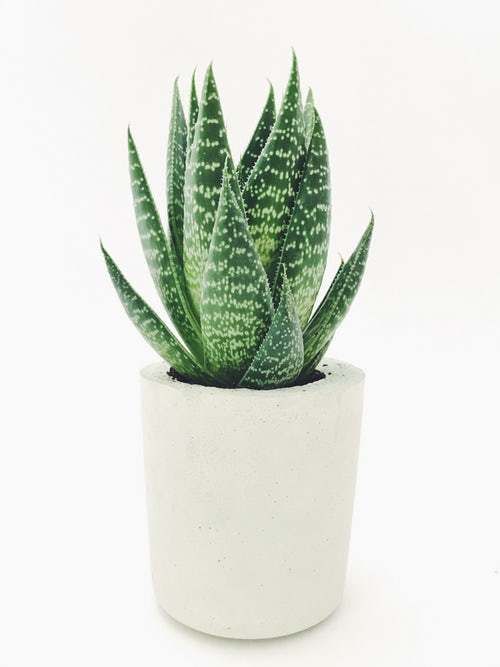
1. Aloe Vera
Spiky and vibrantly green, the Aloe plant is as useful as it is pretty – they’re said to purify the air and can sooth sun and kitchen burns when rubbed onto the skin. Magic.
How to care for it:
Aloe Vera plants keep water in their leaves, so they don’t need much extra help – in fact, the most common cause of Aloe Vera death is by overwatering. A good trick is to check the dryness of the soil and ensure at least the top inch is dry before watering the plant (usually every 7-14 days). Keep yours somewhere bright but away from direct light.
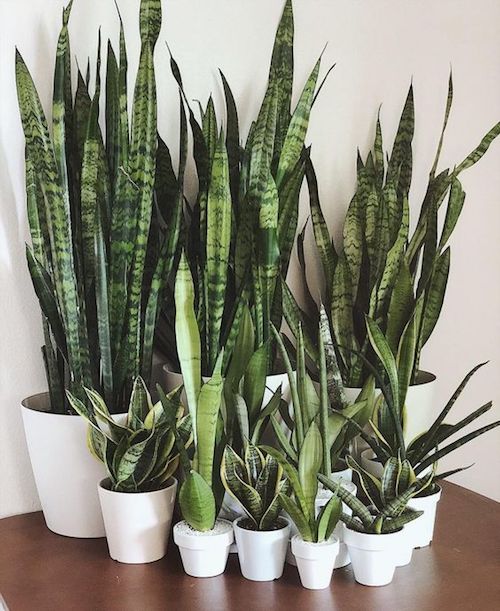
2. Snake plant
Snake plants are given their name because of their unique twisty, upright leaves. These striking house plants also have purifying skills, so can improve the air quality at home.
How to care for it:
These plants are pretty prone to rot, so choose a soilless potting mixture and use a terracotta pot that won’t trap water inside. Other than that, snake plants are super easy to care for. They like indirect light best, but can cope with most conditions. When watering, try not to get the leaves wet and stick to watering only every 2-6 weeks – depending on the temperature and humidity at home. Water too much and it’ll definitely rot, so less is more.
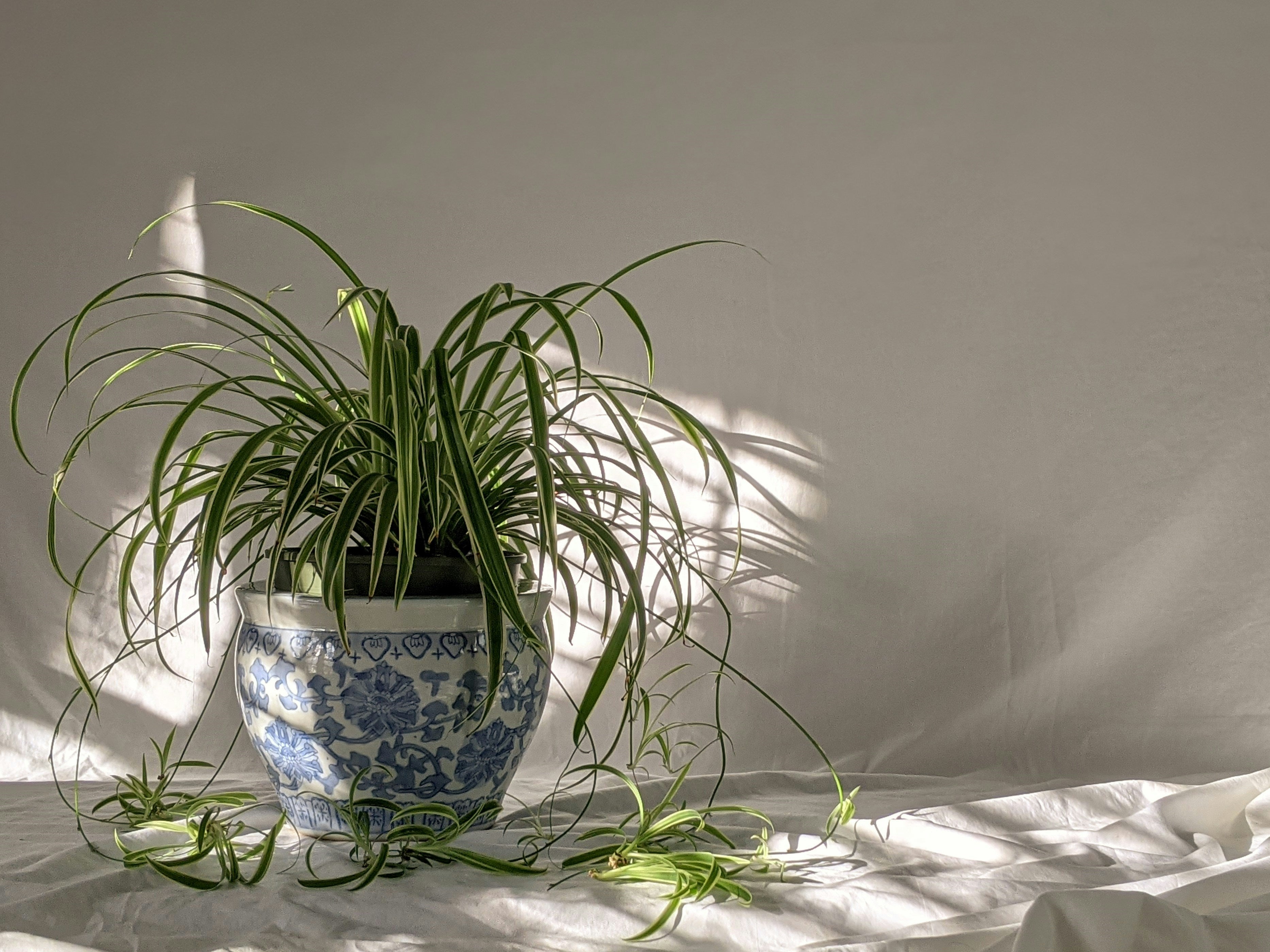
3. Spider plant
Spider plants are one of the easiest of all to grow because they’re adaptable to most living conditions. Recognisable due to their sprawling light green leaves, these plants will regularly grow their own babies that hang off their leaves like spiders on a web (geddit).
How to care for it:
Spider plants can put up with a fair bit of abuse, so they’re great for newbies. Put them in indirect light and make sure the soil’s well drained – a terracotta pot on a dish for watering will do the trick. Keep them well watered but make sure they’re not too soggy (#rootrot). These plants prefer cooler temperatures (13-18°C), so try to keep them out of direct sunlight, and trim off any shrivelled brown leaves as and when they appear.
If yours starts growing babies, congrats! The babies (sometimes called spiderettes) can be repotted and grown into a new plant, which makes a decent gift that won't cost you a penny. If you want to re-root a spiderette, just cut it off the mother, place in soil and water generously – before putting the pot in a ventilated plastic bag and leaving in a bright location. Once it’s rooted, you can remove the bag and grow the plant as usual.
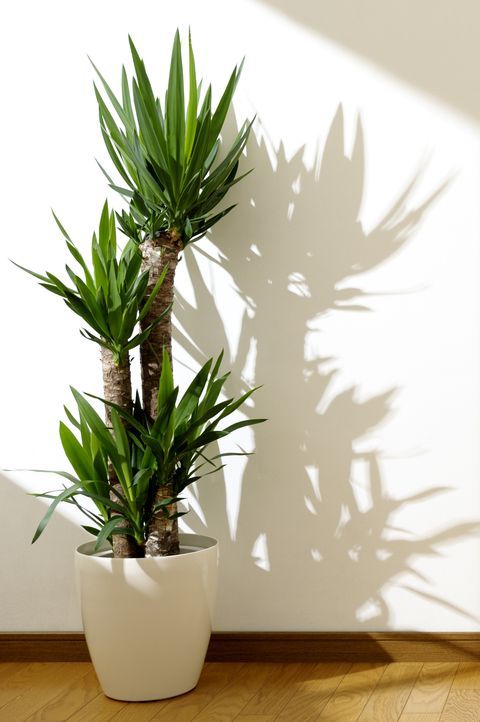
4. Yucca plant
Reminiscent of a mini palm tree, the Yucca plant will make any room its in look tropical. They’re pretty low key to care for and still look great with minimal watering (bonus).
How to care for it:
Yucca plants have chunky trunks so need to be in a sturdy pot that can hold their weight, with plenty of soil. They like bright light and can cope with direct sun too, and they're fine with dry soil and dry conditions. Which naturally means Yucca plants need to be in a well-draining pot and really don’t need much watering – leaving them to sit in water will cause the dreaded root rot. </3
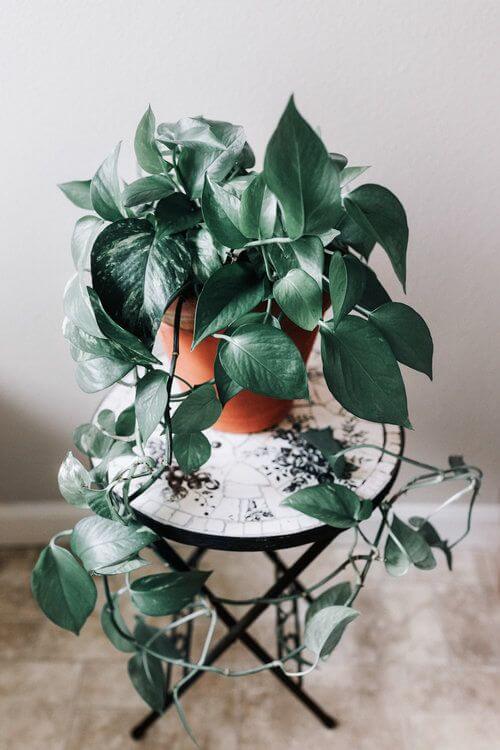
5. Pothos
We’re low-key obsessed with Pothos plants. Think: jungly, sprawling, and vine-like – with pretty leaves that twist and grow their own way. Hang on a bookcase or shelf to get that trailing leaf effect.
How to care for it:
Pothos plants cope with most light conditions, but normal indoor light is the best – avoid direct sunlight where possible. Keep the soil moist and let it dry out between waterings. The leaves usually indicate when it’s time for more H2O – wilting, browning leaves mean more water’s needed, while yellow leaves indicate you’re overwatering. This is a tropical plant so prefer 21–32°C heat, but can survive in temperatures as cool as 12°C. Which is especially good news for us Brits…
